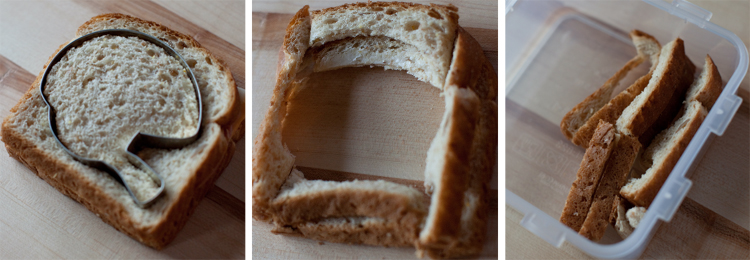Waste not...
Over the past year I've done a fair amount of reading on school lunch programs. While I've focused most of my research on food and the health statistics among school age children, another topic that captured my attention was food waste. The amount of waste associated with elementary school lunches is astounding. Statistics show that the average elementary student wastes 25% of their lunch.Two independent research groups audited lunchroom waste and their findings were staggering. The first group audited a school in Loveland, Colorado and found the amount of fruit that ended up in the trash topped 40% while 32-44% of the vegetables were thrown out. Ethan Bergman, a professor in the Dept. of Health and Human Performance at Central Washington University who studies school nutrition says this, On the days theyre serving broccoli or cauliflower, you look in the garbage and its all green or white. Seven Generations Ahead, a non-profit group, conducted another study in Chicago and found that in one school alone students were discarding 334 lbs. of food in a single day! It is estimated that this kind of food waste costs taxpayers $2 billion dollars through the National School Lunch Program.
In this article, the author writes, "We live in a culture of excess, and food is no exception. The average American wastes more than half a pound of food per day. " The same article also outlines some interesting statistics about food waste in America:
- 40% of the food produced in America is never consumed
- 29 million TONS of food is wasted in America every year
- 17% of landfills are made up of food scraps
- 25% of the food that enters the home is never consumed
All in all...food waste has reached epic proportions in this country. Combine the statistics mentioned above with the fact that typical American school aged child generates 67 pounds of discarded school lunch packaging waste per school year (that's more than 18,000 pounds of waste per year at the average-sized elementary school) and you'll see that school lunches alone generate A LOT of waste.
This information has made me much more mindful of how I handle excess food in our home. As you may have noticed, I tend to cut a lot of my kids foods into shapes. Studies show that consumption of fruits and vegetables greatly increases if they are served in cut format. This has certainly proved to be the case with my kids which makes it well worth the effort. Obviously when I cut shapes out of food for lunches there are scraps leftover and VERY rarely do I throw any of those scraps away (by throwing away, I mean putting them in our compost pile). So, today I thought I'd take some time today to share some tips and tricks for using lunch scraps.
Below you can see how I created lunches for all of my boys (husband included) yesterday and used every ounce of excess so as to not waste the food. I'm happy to report that the boys came home with all but a few bites of food gone. My youngest son left a grand total of 2 uneaten cucumber stars in his lunch box and my oldest left 3 cheese curds and 4 almonds uneaten. That's a far cry from the amount of food I continue to see kids throw away when I join my boys for lunch at school.
First, I do my best to find cookie cutters that take up as much of the bread as possible. Separate the meat, cheese and bread. Cut leftover bread into strips and store in an airtight container in the refrigerator.


Now cut the scraps of meat and cheese into chunks and store in an airtight container in the refrigerator.

When I cut shapes out of fruits or vegetables I typically divide the pieces between my two boys. As you can see below, I made a stack of "solid" star cucumbers for one of my boys and another stack of star "outline" cucumbers for the other. If you have more than one child this is a great way to utilize scraps of fruits and veggies.




Sources:

%COMMENTS%